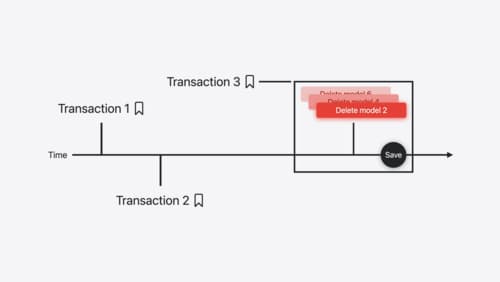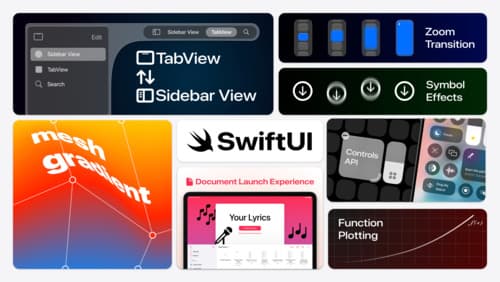I want to learn about SwiftUI data flow and lifetime
Asked on 2025-04-21
1 search
To learn about SwiftUI data flow and lifetime, you can refer to the session titled "SwiftUI essentials" from WWDC 2024. This session covers the fundamentals of how SwiftUI manages data flow and state changes in your app. Here are some key points from the session:
-
SwiftUI views are state-driven, meaning that when your view state changes, SwiftUI automatically updates the UI, eliminating boilerplate and update bugs. SwiftUI maintains a representation of the user interface behind the scenes and updates outputs based on data changes (SwiftUI essentials).
-
SwiftUI uses a declarative approach where views are descriptions of the current state of the UI. They are not long-lived object instances that receive imperative commands over time. This is why SwiftUI views are value types defined using structs (SwiftUI essentials).
-
SwiftUI provides several tools for state management, including
@Stateand@Binding.@Statecreates a new internal source of data for a view, while@Bindingcreates a two-way reference to the data (SwiftUI essentials).
For a more comprehensive understanding, you can watch the session SwiftUI essentials which covers the fundamentals of views and their state-driven nature.

Track model changes with SwiftData history
Reveal the history of your model’s changes with SwiftData! Use the history API to understand when data store changes occurred, and learn how to use this information to build features like remote server sync and out-of-process change handing in your app. We’ll also cover how you can build support for the history API into a custom data store.

What’s new in SwiftUI
Learn how you can use SwiftUI to build great apps for any Apple platform. Explore a fresh new look and feel for tabs and documents on iPadOS. Improve your window management with new windowing APIs, and gain more control over immersive spaces and volumes in your visionOS apps. We’ll also take you through other exciting refinements that help you make expressive charts, customize and layout text, and so much more.

Create custom visual effects with SwiftUI
Discover how to create stunning visual effects in SwiftUI. Learn to build unique scroll effects, rich color treatments, and custom transitions. We’ll also explore advanced graphic effects using Metal shaders and custom text rendering.
